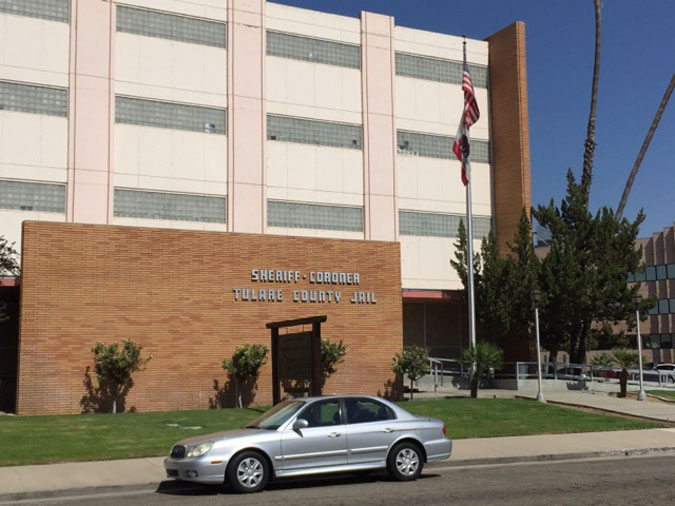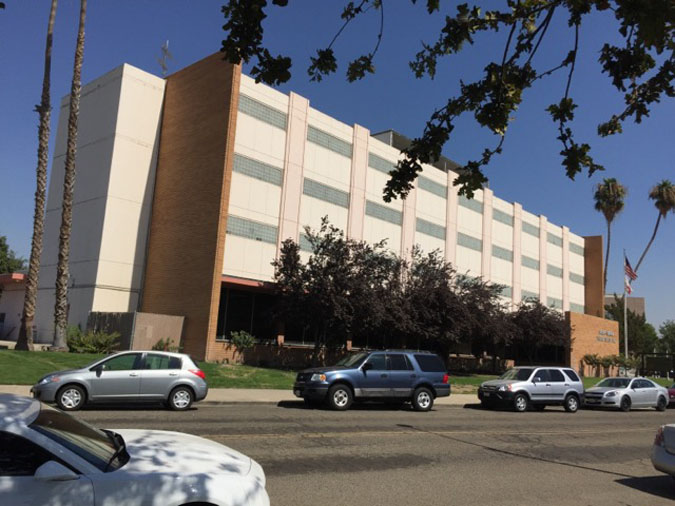Taking A Closer Look At Inmates In Tulare County Jail: The Reality, Challenges, And Solutions
So listen up, folks. When we talk about inmates in Tulare County Jail, we're diving into a world that's more complex than just bars and cells. This isn't just about locking people up; it's about understanding the system, the individuals within it, and the broader implications for society. You might think jails are just places where people go when they mess up, but there's so much more to the story. Let's break it down, shall we?
In Tulare County, like many other places, the jail system plays a crucial role in maintaining public safety. But at the same time, it raises questions about rehabilitation, justice, and human rights. The inmates in Tulare County Jail aren't just statistics or numbers; they're people with stories, struggles, and potential for change. And as a society, it's our responsibility to figure out how to address these issues in a fair and effective way.
Now, before we dive deeper, let's get one thing straight: this isn't just about pointing fingers or blaming anyone. It's about understanding the system, its flaws, and how we can work together to make things better. So buckle up, because we're about to take a closer look at the reality of life behind bars in Tulare County Jail.
Read also:Comprehensive Guide To Ppd Test Philadelphia Everything You Need To Know
Understanding the Jail Population: Who Are the Inmates in Tulare County Jail?
Alright, let's start by getting to know the people we're talking about. The inmates in Tulare County Jail come from all walks of life. Some are there for minor offenses, while others face serious charges. But regardless of their circumstances, each person has a unique story. According to recent data, the jail houses around 1,200 inmates on average, with a diverse demographic makeup.
Here’s a quick snapshot:
- About 60% of the inmates are male, while 40% are female.
- The majority of the population is between the ages of 18 and 35.
- Racially, the population is roughly 45% Hispanic, 35% White, and 20% Black or other ethnic groups.
What's interesting is that many of these individuals are not yet convicted. They're being held pre-trial, which means they're technically innocent until proven guilty. This raises important questions about bail systems and pre-trial detention, which we'll touch on later.
Common Offenses Leading to Incarceration
Let's talk about why people end up in Tulare County Jail. While every case is different, there are some common trends. Drug-related offenses, theft, and domestic violence are among the top reasons for incarceration. But here's the kicker: many of these offenses are linked to underlying issues like poverty, mental health, and addiction. It's not just about bad decisions; it's about systemic problems that need addressing.
For example, did you know that about 30% of inmates in Tulare County Jail have a documented history of mental health issues? And around 40% report substance abuse problems. These numbers highlight the need for more comprehensive support systems, both inside and outside the jail.
Life Inside Tulare County Jail: What It’s Really Like
So, what's it like to be an inmate in Tulare County Jail? Well, it's not exactly a walk in the park. The daily routine is structured, but that doesn't mean it's easy. Inmates typically follow a strict schedule, with limited opportunities for recreation, education, or personal development. And let's not forget the challenges of living in close quarters with others, dealing with limited resources, and coping with the psychological toll of incarceration.
Read also:In Domain A Comprehensive Guide To Indias Country Code Toplevel Domain
Here’s a typical day in the life of an inmate:
- Wake up around 6:00 AM
- Breakfast is served at 7:00 AM
- Free time or work assignments during the morning
- Lunch at noon
- Afternoon activities, such as counseling or classes (if available)
- Dinner at 5:00 PM
- Lockdown by 8:00 PM
Now, this might sound straightforward, but the reality is far more complicated. Inmates often face overcrowding, inadequate healthcare, and limited access to programs that could help them reintegrate into society. It's a tough environment, and not everyone comes out the same way they went in.
The Role of Rehabilitation Programs
One of the most critical aspects of jail life is rehabilitation. The goal isn't just to punish people but to help them turn their lives around. Tulare County Jail offers a range of programs, including:
- Drug and alcohol treatment
- Mental health counseling
- Education and job training
- Anger management and conflict resolution
These programs are essential, but they're often underfunded and understaffed. As a result, not every inmate has access to the resources they need. This is where community support and advocacy can make a big difference.
Challenges Facing Tulare County Jail
Let's talk about the elephant in the room: the challenges. Tulare County Jail, like many correctional facilities, faces a host of issues that impact both inmates and staff. Overcrowding is a major concern, with the jail often operating at or above capacity. This not only affects living conditions but also strains resources and increases tensions among inmates.
Another issue is staffing. Correctional officers are often overworked and underpaid, leading to high turnover rates. This can impact the quality of care and supervision within the facility. And let's not forget about the budget constraints. With limited funding, it's tough to implement meaningful changes or expand programs that could benefit inmates.
The Impact of Overcrowding
Overcrowding is a serious problem in Tulare County Jail. When too many people are crammed into a small space, it creates a perfect storm of stress, frustration, and conflict. Inmates may have limited access to basic amenities like showers or outdoor time. This can lead to health issues, both physical and mental, which further complicate the situation.
So, what can be done? One solution is to invest in alternative forms of punishment, such as electronic monitoring or community service. By reducing the number of people in jail, we can improve conditions for everyone involved. It's a win-win situation, if you ask me.
The Importance of Mental Health Support
Mental health is a huge issue in the jail system, and Tulare County Jail is no exception. Many inmates struggle with conditions like depression, anxiety, and PTSD. Without proper support, these issues can worsen, leading to further problems both inside and outside the jail.
Tulare County Jail does offer mental health services, but as we mentioned earlier, they're often stretched thin. The demand far exceeds the supply, leaving many inmates without the help they need. This is where partnerships with local organizations and mental health professionals can make a real difference. By bringing in outside expertise, we can provide better care and support for those who need it most.
Breaking the Cycle of Recidivism
Recidivism, or the tendency of a convicted criminal to reoffend, is a major challenge in the corrections system. In Tulare County, the recidivism rate is around 40%, which means nearly half of all inmates end up back in jail after their release. This cycle is hard to break, but it's not impossible.
One way to tackle recidivism is through education and job training. By equipping inmates with the skills they need to succeed in the workforce, we can reduce their likelihood of returning to crime. Programs like vocational training, GED classes, and life skills workshops are crucial in this regard. But again, funding and resources are often the limiting factors.
Community Involvement: How You Can Help
Here's the thing: the issues facing Tulare County Jail aren't just the responsibility of the government or law enforcement. They're everyone's responsibility. As members of the community, we have a role to play in supporting inmates and helping them reintegrate into society.
There are plenty of ways to get involved. You can volunteer your time, donate resources, or advocate for policy changes that benefit inmates and their families. Even small actions, like writing letters to inmates or mentoring former offenders, can make a big difference.
The Power of Advocacy
Advocacy is a powerful tool for change. By speaking out about the issues facing Tulare County Jail, we can raise awareness and push for meaningful reforms. Whether it's calling for better mental health support, more rehabilitation programs, or fairer sentencing laws, your voice matters. And when enough people speak up, change is possible.
Looking to the Future: What’s Next for Tulare County Jail?
So where do we go from here? The future of Tulare County Jail depends on the actions we take today. By addressing the challenges head-on and investing in solutions that work, we can create a system that's fairer, more effective, and more humane.
One promising development is the growing focus on restorative justice. This approach emphasizes healing and reconciliation over punishment, with the goal of repairing harm and rebuilding relationships. It's a shift in mindset that could revolutionize the way we think about incarceration.
The Role of Technology
Technology also has a role to play in improving the jail system. From virtual counseling sessions to online education platforms, there are countless ways tech can enhance the inmate experience. Of course, implementing these solutions requires investment and planning, but the potential benefits are well worth it.
Conclusion: Taking Action for a Better Future
Alright, let's wrap this up. We've talked about the reality of life for inmates in Tulare County Jail, the challenges they face, and the solutions that could make a difference. It's clear that this is a complex issue with no easy answers. But that doesn't mean we should give up. On the contrary, it means we need to work harder and smarter to create a system that works for everyone.
So here's what I want you to do: take action. Whether it's volunteering your time, donating resources, or advocating for change, every little bit helps. Together, we can make a difference in the lives of those who need it most. And who knows? Maybe one day, Tulare County Jail won't just be a place of punishment but a place of transformation and hope.
Table of Contents
- Understanding the Jail Population
- Life Inside Tulare County Jail
- Challenges Facing Tulare County Jail
- The Importance of Mental Health Support
- Community Involvement
- Looking to the Future
- Conclusion


